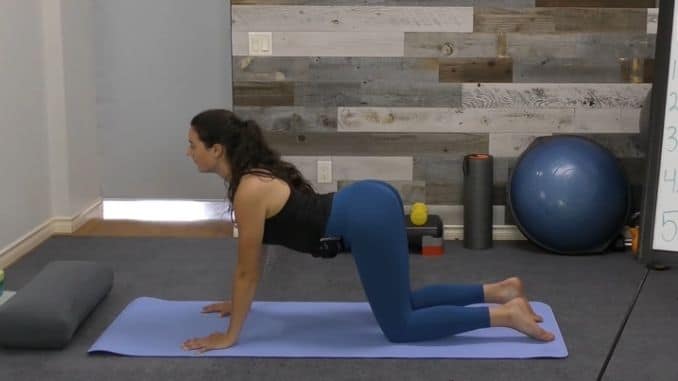A healthy spine is essential for leading an active and balanced life. The spinal column, often referred to in practices like Yoga Spine, houses a network of nerves that connects your brain to the rest of your body, enabling movement and proper organ function. Poor sleeping positions, prolonged sitting, and improper posture can stress the spine, potentially leading to discomfort and serious health issues. Embracing activities that promote spinal health, such as yoga, can enhance flexibility and relieve tension.
Yoga is a safe and gentle way to relieve stress on the spine and reduce back tension. In addition, many yoga poses help stretch and strengthen vital back muscles. Today, we are happy to share 5 impactful yoga poses designed to keep your spine happy and healthy.
1. Cat-Cow
Begin in a 4-point position with your hands below your shoulders and your knees beneath your hips. Contract your abdominal area. Slowly lift your head as you arch your mid-back. Then alternate by rounding out your mid back as you lower your head downward. Repeat the sequence of movements.
 |
2. Cobra
Lie on your stomach with your feet shoulder-width apart, maintaining good alignment with your head, shoulders, hips, and legs. Bend your arms and plant your hands at your sides at chest height. Breathe in, then press up as you arch your back. Use your back and core strength with minimal assistance from your hands. Be careful not to overextend your neck. Hold this position for several deep belly breaths, in through your nose and out through your mouth. Relax and return to the starting position.
3. Bridge
For this exercise, use a yoga block, exercise ball, or any dense object that you can squeeze between your knees.
Lie on your back on the floor with your arms at your sides, relaxing your upper body. Bend your knees, flatten your feet on the floor, and squeeze the yoga block between your knees. Engage your core and inner thighs, then push from your heels to lift your hips. Hold this position for several deep belly breaths, in through your nose and out through your mouth. Relax and return to the starting position.
4. Spinal Traction
Lie on your back on the floor with your knees bent and feet flat on the floor, around shoulder-width apart. Position your feet close to your seat and relax your upper body. Place your palms against your upper thighs. Engage your core and press your palms into your thighs, lengthening your spine. Hold this position for several deep belly breaths, in through your nose and out through your mouth. Relax and return to the starting position.
5. Spinal Twist
For this exercise, use a bolster, pillow, yoga block, or anything comfortable that you can place under your bent knee for support.
Lie on your back on the floor with your knees bent and your feet flat. Place your arms at your sides, relaxing your upper body. Engage your core and drop your knees to one side, resting your lower knee on a bolster for support if needed. Hold this position for several deep belly breaths, in through your nose and out through your mouth. Relax and return to the starting position. Repeat the movement on the opposite side.
An unhealthy spine often leads to spinal stenosis, which is the narrowing of the spaces within the spine. This results in pressure on the spinal cord or nerve roots. Common symptoms of this condition include back or neck pain, numbness, tingling and weakness in the arms and/or legs, and even a loss of sensation in the feet. If you notice you’re developing any of these symptoms, apply a heat compress or take a hot shower to loosen up those tight back muscles. To relieve inflammation, a cold compress is a smart choice. Over-the-counter medications can also provide temporary relief from discomfort, pain, and inflammation. For serious back pain concerns, we highly recommend consulting with your healthcare provider for a thorough assessment.
Poor posture has become an epidemic! Learn simple strategies to improve your posture and alignment here.